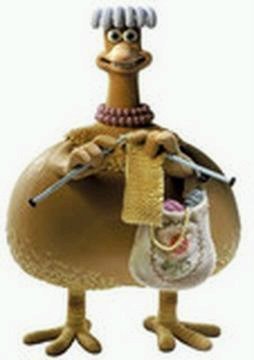The cleaning frenzy that took me over last week continued into this week. I figured I’d share some tips that have worked for me in the past and some I’ve recently discovered.
1. Keep the supplies where you need them. I don’t remember where I learned this tip, but of all of them, this is the most useful. I store my replacement trashcan liners under the one in use in each trashcan. That way I can just lean in to get a fresh one. It also assures I have enough around. Same thing with general purpose cleaner, cleansing powder, dishtowels, glass cleaners, etc. I keep a small supply of each in each bathroom under the sink, and I never have to stop in the middle of cleaning to go up or down stairs to get something I need. Also, when I run out of something, I’ve cleaned enough, and I stop and replenish the supply on my next trip through instead of trying to do it all at once. When my main broom, which I use for the kitchen, needs replacing, I put the old but still useful one either upstairs, downstairs, or designate it for patio use and throw the grungiest of the lot out. I even store clean sheets under the mattress so that they’re there when I change the bed.
2. From the Clean Team: Go ahead and use cleansing powder in the toilet bowl. It’s cheap, easy to find, cleans very well, and you’ll be buying a new toilet long before you get anywhere near wearing through the porcelain. Toilets last for decades, even with using cleansing powder. Get one with bleach if you can, too.
3. Speaking of bleach and its wonderful way of killing every germ or bacteria it touches, the How Clean is Your House ladies taught me to soak my kitchen sponges, dishcloths, and brushes in a very light bleach solution in order to disinfect them. Previously, I’d rinsed them out at night and hosed them down with a disinfectant spray. Waste of my time. Now I throw them in the clean side of the sink (the kids wind up putting dirty dishes in the other side during the night), close the drain, add about ¼ sink of hot water and ONE capful of bleach. I leave them there overnight and drain the sink and rinse and ring them out in the morning. This is just enough to act as a thorough disinfectant, but it doesn’t bleach out the dishcloths. It does remove lingering stains, any smells, and other ickinesses. It doesn’t seem to degrade the materials either – and, even if it did a little, it’s not like there’s a sponge embargo in my town preventing me from getting new ones.
4. Coffeemakers: I learned this one yonks ago, again from an unremembered source, when I was on my all-natural cleaning quest. Run a whole potful of white vinegar through the machine to clear out lime, or if your coffeemaker isn’t that caked up, run a pot of half white vinegar and half water through, then two or three potfuls of plain water. The smell is ferocious at first, but you’ll be amazed at the amount of lime and scale that it clears away (plus, pouring it down the drain can be combined with the next tip, so you get double use out of the vinegar) and your coffeemaker will work like a champ. This is the same thing that happens when you use a commercial preparation for cleaning your coffeemaker, and it’s cheaper and, really, less damaging to the inner tubing and mechanism.
5. Drains. The HCIYH ladies combined things I’d tried before in a new, very effective way. I had previously used baking soda and vinegar to gently blow drains clean and didn’t find it noticeably wonderful. I tried pouring boiling water down slow drains, and, while it worked for a while, it needed to be done fairly often. My British TV friends clear slow drains as follows: shove ½ cup of household salt down the drain, and follow it with a quarter cup of baking soda. Pour a goodly dose, between a ½ and a full cup of white vinegar on top (this is where you would use some of that coffeemaker vinegar). Let it foam until it’s done, then pour a full pot of boiling water down the drain. The salt works as a mild abrasive, and although it dissolves, it does seem to do some abrading while the vinegar and baking soda reaction is foaming it around in the drain. Following it with hot water clears any loosened but not completely dissolved crud, and whoosh, it works like a house afire for me.
My kitchen sink tends to run slowly from time to time (I suspect my children of letting too much grease and crud bits go down when they’re doing dishes), and I’ve had problems with all my bathroom sinks. I can understand that – they get toothpaste muck, hairs, soap scum, and so forth, and it all has a chance to dry all day until the same yuck gets washed down it again that night. So, I first tried the above on my slowest bathroom sink. It foamed for 20 minutes. I wondered if I had accidentally gunked it up worse somehow. Then I poured the boiling water down it, a whole potful – about 10 cups of water, and for the first time in years, there was no delay – it just drained away as fast as I poured it. Then I tried it in the kitchen, same thing. I’m a believer.
Friday, July 27, 2007
Subscribe to:
Post Comments (Atom)


No comments:
Post a Comment